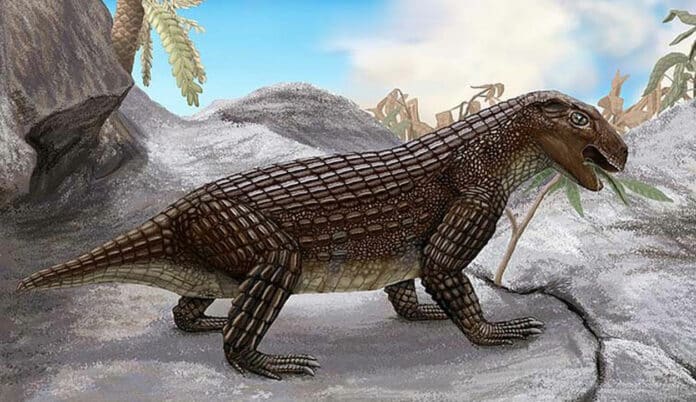In a pair of new papers, scientists are delving into the rich evolutionary history of Crocodiles. They tracked their origins, how they traveled throughout the world, etc.
The early days:
Crocodile evolution has a rich and complex history. In the world’s tropical and subtropical regions, about 28 species of crocodilians are currently in existence. However, this represents a very small portion of the total number of extinct crocodile species.
A recent study has revealed that the larger, modern group of crocodilians likely first appeared in Europe up to 145 million years ago.
How did it spread around the world?
Subsequently, the ancestors of crocodiles and alligators separated in North America, allowing crocodiles to spread far farther throughout the world due to their tolerance for saltwater.
Professor Paul Barrett, a paleontologist at the Natural History Museum, said, “It seems most likely that the ancestors of today’s alligators and crocodiles evolved in North America, and then after that, alligatorids [which includes alligators and caimans] stay more or less within the Americas while crocodiles get everywhere else.”
“It looks like the ability to cross saltwater bodies has allowed crocodiles to become much more widely dispersed than alligators: crocodiles are found all over the world, including in tropical oceans, whereas alligators are confined to freshwater and unable to reach some areas. Different crocodile subgroups seem to have prospered and originated in different regions.”
Scientists also discovered that crocodiles’ slow growth rate was a secondary adaption that separated them from their distant cousins. Additionally, their study demonstrates that for more than 220 million years, the closest living relatives of crocodiles and birds have had entirely different physiological strategies.
Diverse crocodilians
Crocodiles, with their huge fangs, armored skin, sluggish lifestyles, and predatory behaviors, are frequently assumed to have remained unchanged from when dinosaurs roamed the earth hundreds of millions of years ago. However, this needs to include their complex and rich evolutionary past.
The broader family Crocodylomorpha, which comprises extant crocodiles, alligators, and gharials, also includes hundreds of extinct species. While meat-eating, mostly freshwater-adapted creatures are the only ones left, this was only sometimes the case 200 million years ago.
A few of these animals were massive carnivores that fed on dinosaurs. Others were tiny, fleet-footed creatures, most likely feeding on insects or other small prey. Several kinds of herbivorous crocodilians had incredibly intricate teeth that resembled those of mammals and may have been used for plant chewing before ingesting.
This includes creatures like Simosuchus, which resembled a contemporary armadillo with a short snout but was probably consuming ferns, fruits, and tubers for food. Additionally, some small, light-built runners like Terrestrisuchus resembled reptilian whippets, and other entirely marine predatory crocodilians like the thalattosuchians had flippers in place of feet.
Paul said, “Crocodiles and their relatives were experimenting with many different ways of life. They’re doing a surprising number of things. This greatly contrasts what we know about crocodiles, which are all predators limited to living in the tropics with semi-aquatic or amphibious lifestyles.”
“Living crocodiles are a pale shadow of the diversity that they and their relatives had in the past.”
Because of this enormous diversity, scientists have been able to investigate the life histories of many creatures. This describes the life, development, and behavior of an animal.
Although it’s common knowledge that giant reptiles grow slowly and move slowly, this was only sometimes the case. As an illustration, some dinosaurs were massive creatures. Thus, their growth would have been gradual over time. Instead, it is now believed that many of these enormous animals were developing much faster than one might expect, given their size.
It also turns out that crocodiles have an equally complicated life history.
So when did crocodiles make the switch to taking things more slowly?
It had been proposed that their growth slowed when they moved into the water, and they took on hiding semi-aquatic tendencies.
The idea of an aquatic lifestyle appears to be disproved by the bones of an extinct relative resembling a crocodile that dates to 220 million years ago. This new animal existed long before crocodiles began to explore the water, even though it was the first known crocodilian to exhibit slower growth. However, why this terrestrial species evolved a slower metabolism is still being determined.
Paul said, “It might be to do with the resources available at the time – they were living in reasonably resource-poor environments. But interestingly, they are also living directly alongside the other big branch of archosaur evolution: the dinosaurs.”
“Dinosaurs were doing something completely different, which was to grow fast. So today, we have slow-growing crocs and fast-growing birds; that difference has existed between these two big groups since at least the Late Triassic. But the reasons why they adopted those different strategies is still guesswork.”
Paul and his associates were also able to determine Crocodylomorpha’s origin. They demonstrated that this group originated in what would become contemporary Europe before the split of alligator and crocodile ancestors somewhere in North America. From this point on, alligators and their kin were usually restricted to the Americas. In contrast, salt-adapted crocodiles could travel the globe and colonize Africa, Asia, and Oceania better.
Journal References:
- Sebastian S. Groh et al., The biogeographic history of neosuchian crocodiles and the impact of saltwater tolerance variability, Royal Society Open Science (2023). DOI: 10.1098/rsos.230725
- Jennifer Botha et al., Origins of slow growth on the crocodilian stem lineage, Current Biology (2023). DOI: 10.1016/j.cub.2023.08.057
